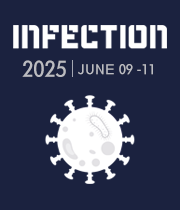Title : Hidden in plain sight: Asymptomatic fournier’s gangrene
Abstract:
Fournier’s Gangrene is an aggressive form of genital necrotizing fasciitis with a mortality rate of 22% – 40%. Clinical features include pain out of proportion to area of erythema, fever, edema, and significant skin discoloration. While traditionally associated with systemic signs of toxicity and striking cutaneous manifestations, one case presented with insidious symptoms.
A 75-year-old male with past medical history of type 2 diabetes, coronary artery disease, hypertension, and hyperlipidemia presented after a fall caused by his “left leg giving out.” Upon admission, he was SIRS 2/4 for elevated respiratory rate and white blood cell count. Tmax was 99.3°F. He denied any subjective infectious symptoms and expressed no concerns beyond the fall. Laboratory analysis showed WBC 19.6, procalcitonin 2.0, Cr 1.16 (baseline 0.85), bicarbonate 17, and glucose 473. He was admitted for his fall secondary to lower extremity weakness and evaluation of leukocytosis.
The patient had a history of persistent leukocytosis and retroperitoneal lymphadenopathy that had resolved months before. However, given the lack of subjective symptoms and a clear chest x-ray and urinalysis, there was low concern for an infectious process. When the patient's WBC count increased from 19.6 to 22.8, empiric treatment for community acquired pneumonia was started with azithromycin and ceftriaxone given a new complaint of dyspnea.
Three days post-admission, a nurse reported significant scrotal and foreskin edema with erythema. The patient, who denied genitourinary symptoms, confirmed the onset of scrotal swelling since admission. Antibiotics were escalated to IV vancomycin/Zosyn and clindamycin. Urology was consulted and diagnosed Fournier's Gangrene via physical exam and a CT abdomen/pelvis showing a necrotizing scrotal soft tissue infection with gas production. Blood and wound cultures were positive for Streptococcus Anginosus and Klebsiella Pneumoniae. Following multiple wound debridements by urology, the patient’s leukocytosis resolved. Per infectious disease recommendations, antibiotics were deescalated to IV ampicillin/sulbactam for the remainder of treatment course. Throughout his entire hospitalization, the patient consistently maintained no urogenital pain whatsoever.
Fournier’s Gangrene is critical and often considered unmistakable in its presentation. However, it is crucial to recognize that patients may present asymptomatically. While they are often acutely aware of their condition, the diagnosis can be missed by providers who do not perform genitourinary exams upon arrival. This oversight is alarming given the severity of potential outcomes. To mitigate this risk, comprehensive physical examinations—including the perineum—should be conducted on symptomatic and asymptomatic patients alike, particularly those with unexplained leukocytosis and/or elevated procalcitonin.


